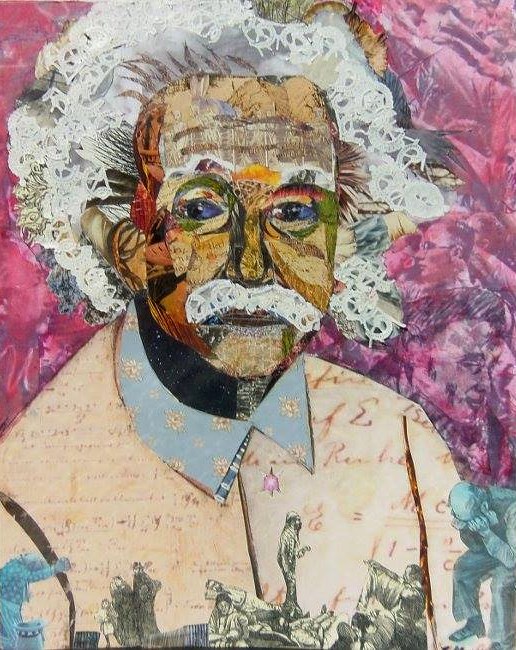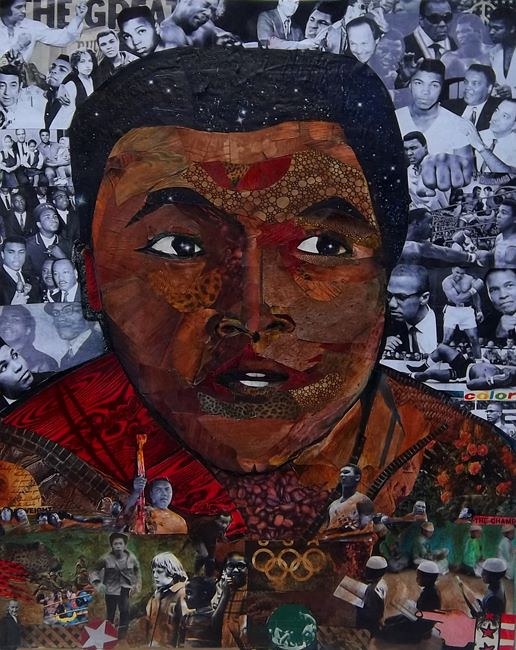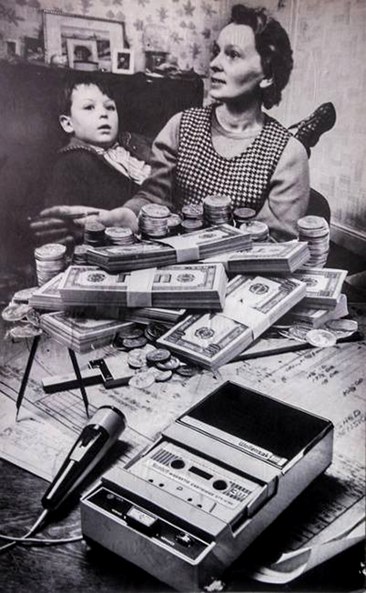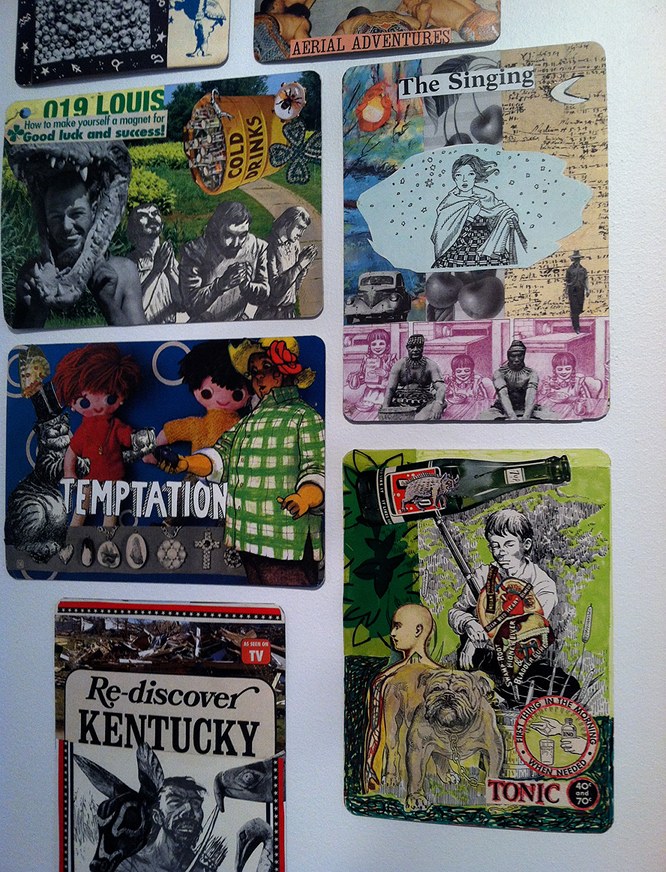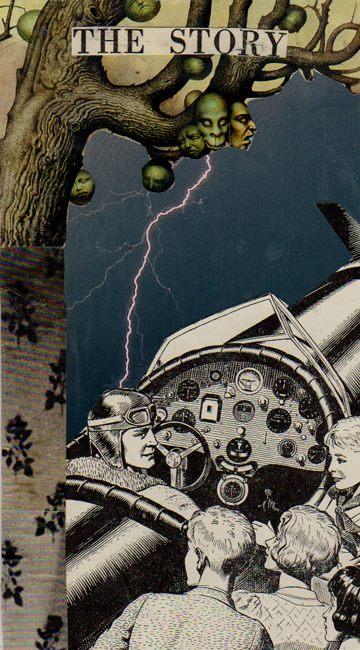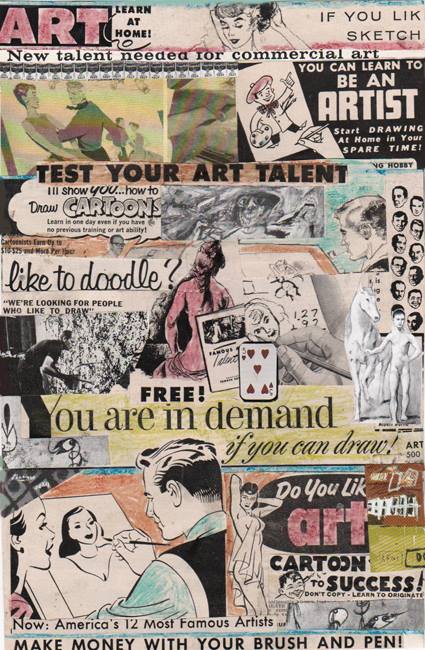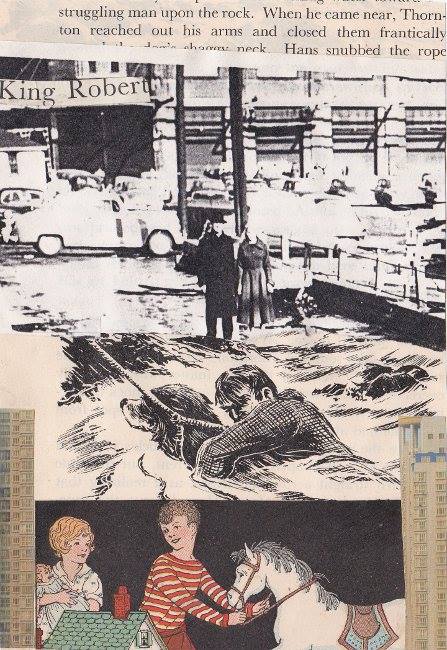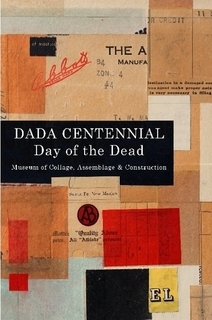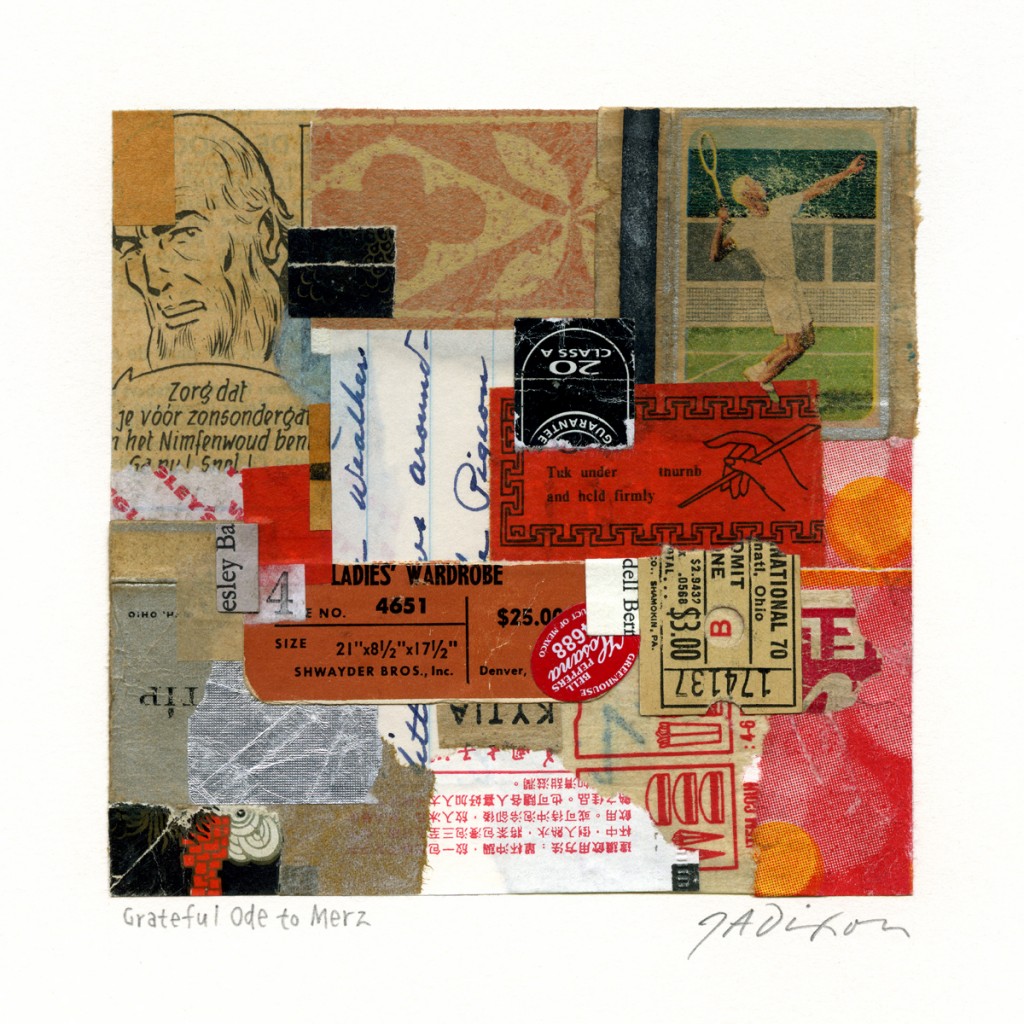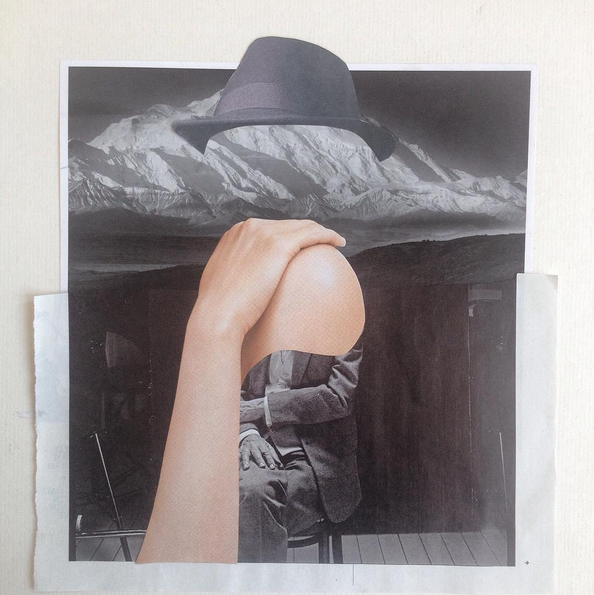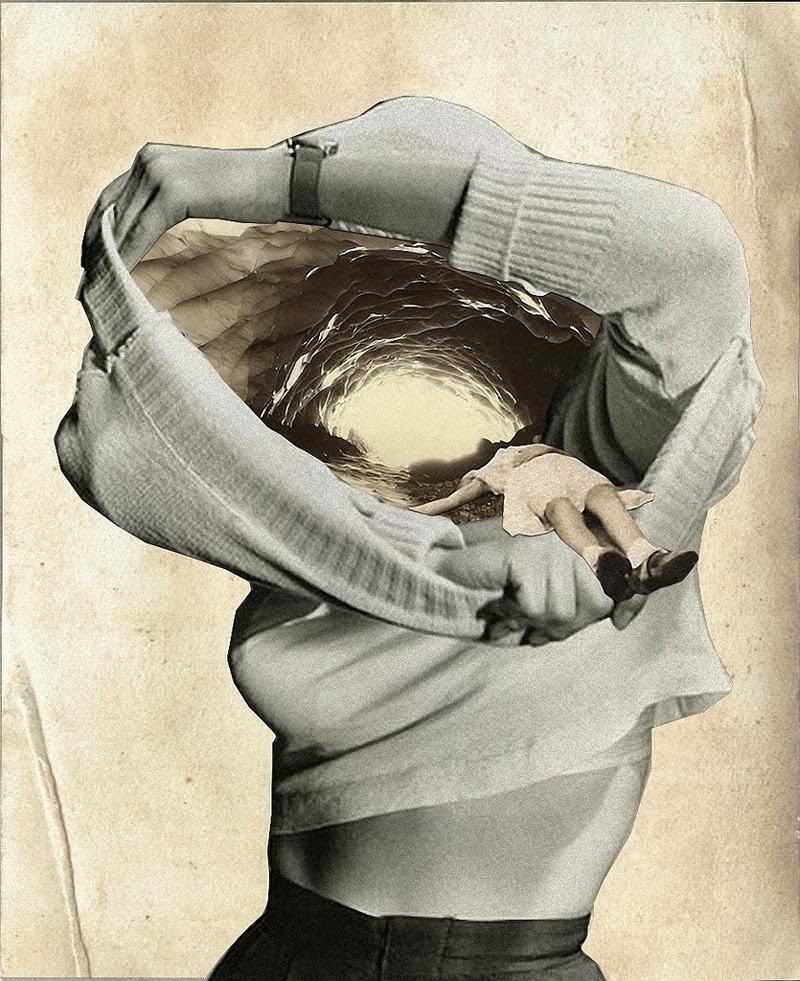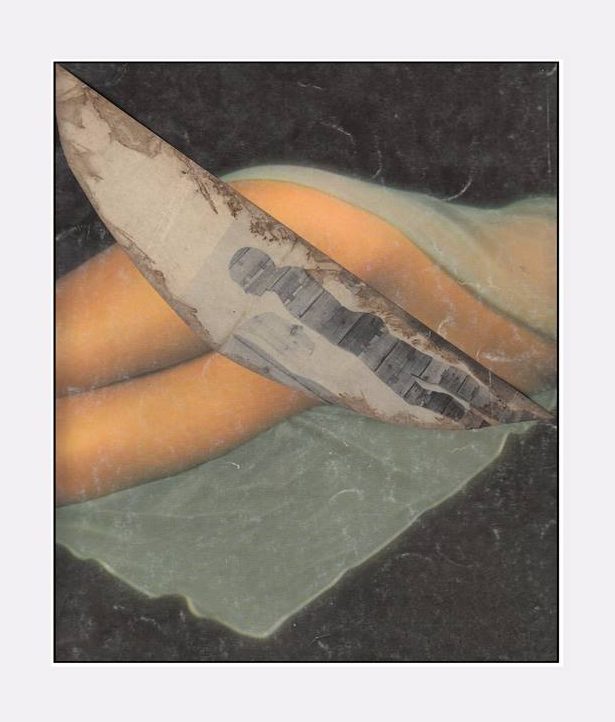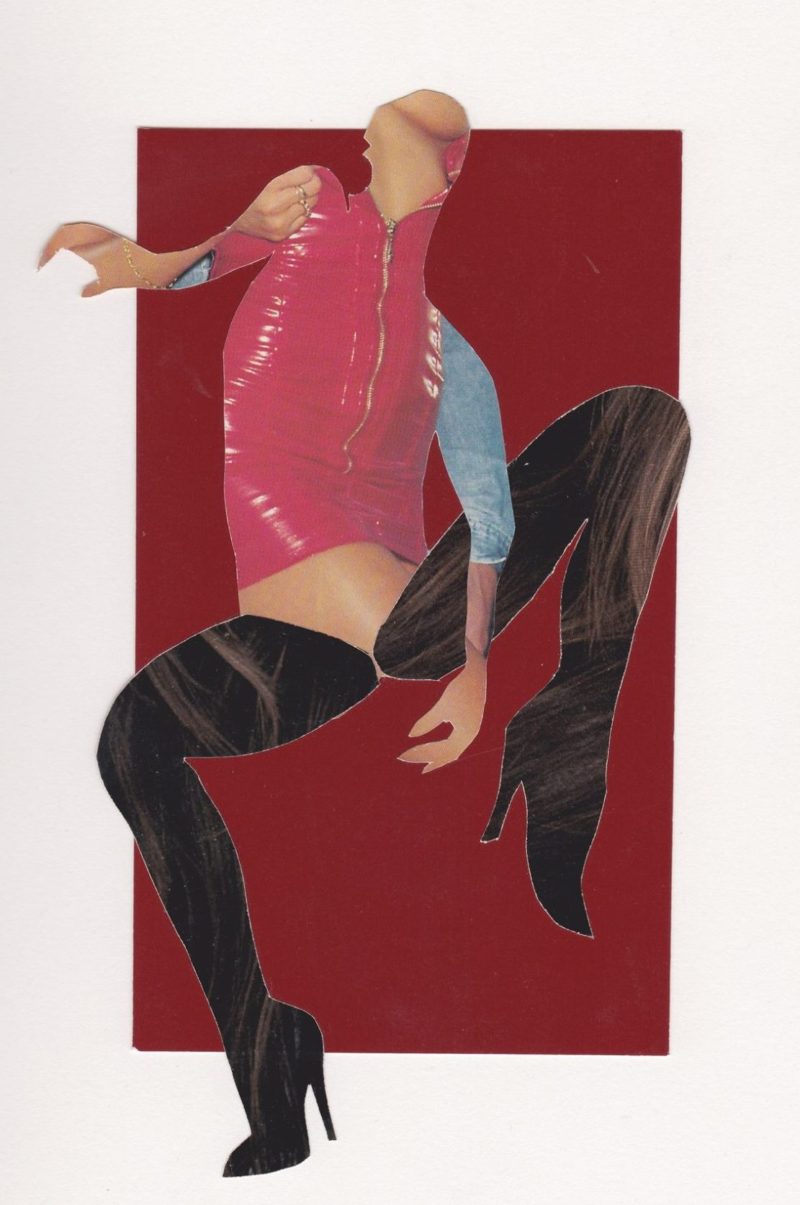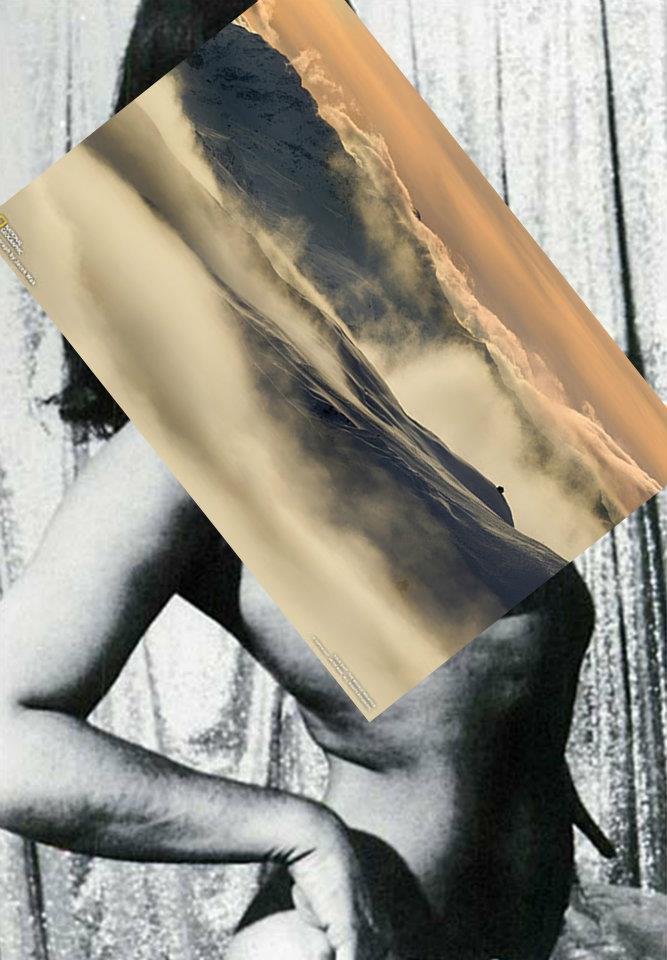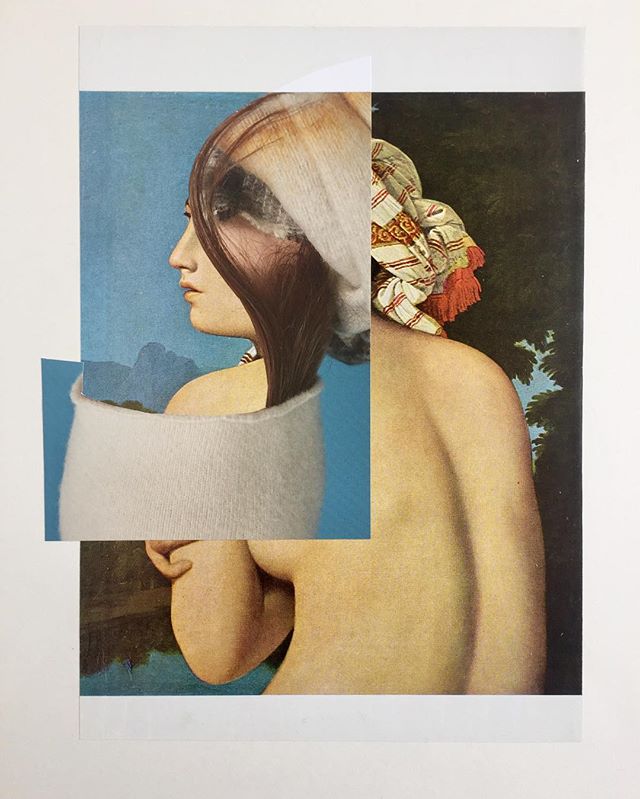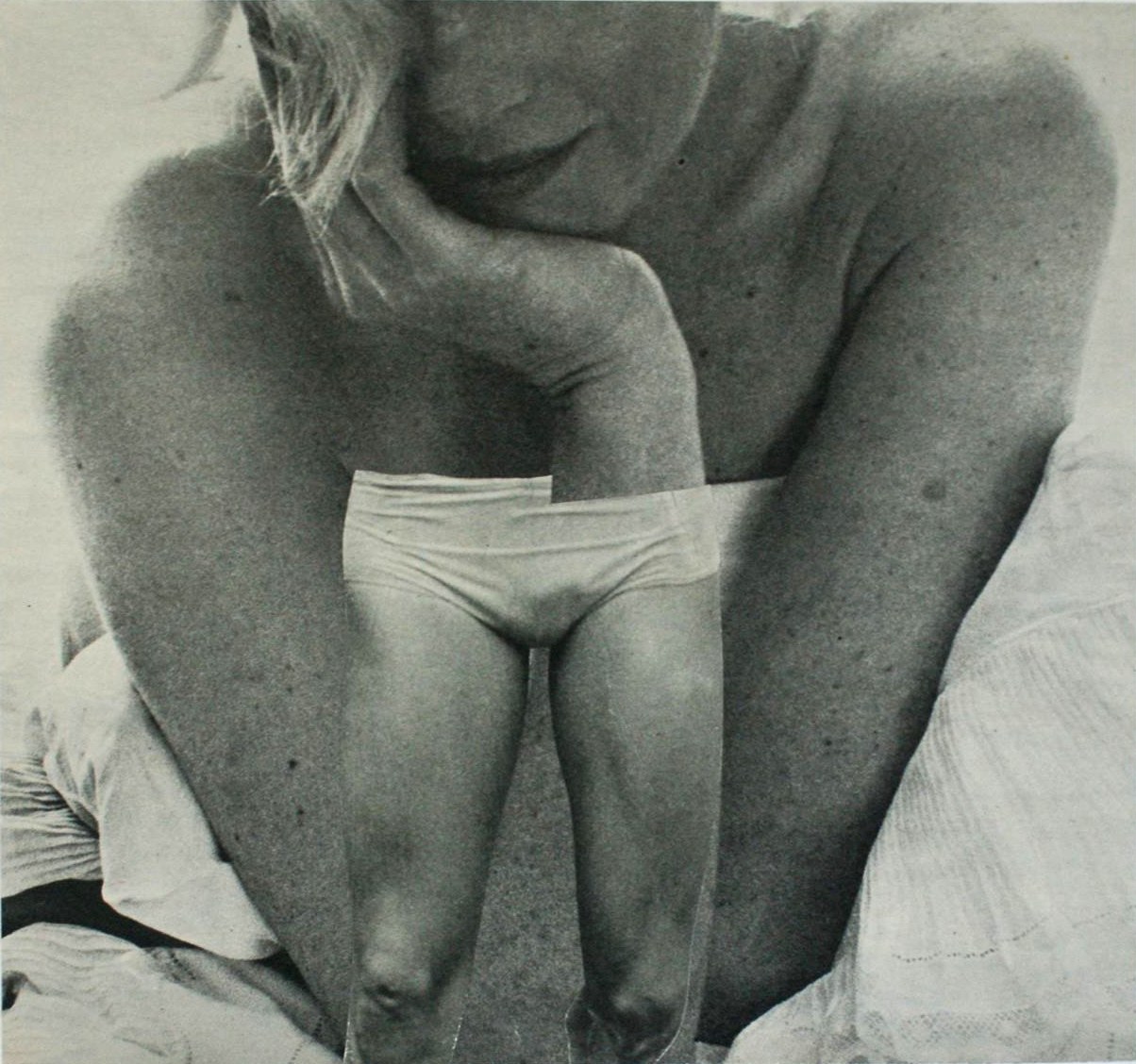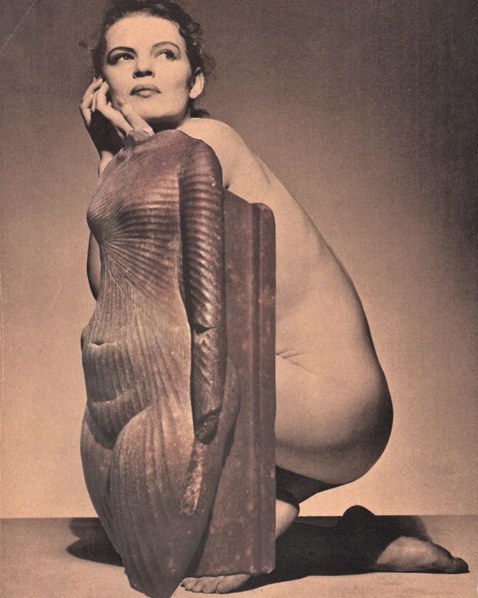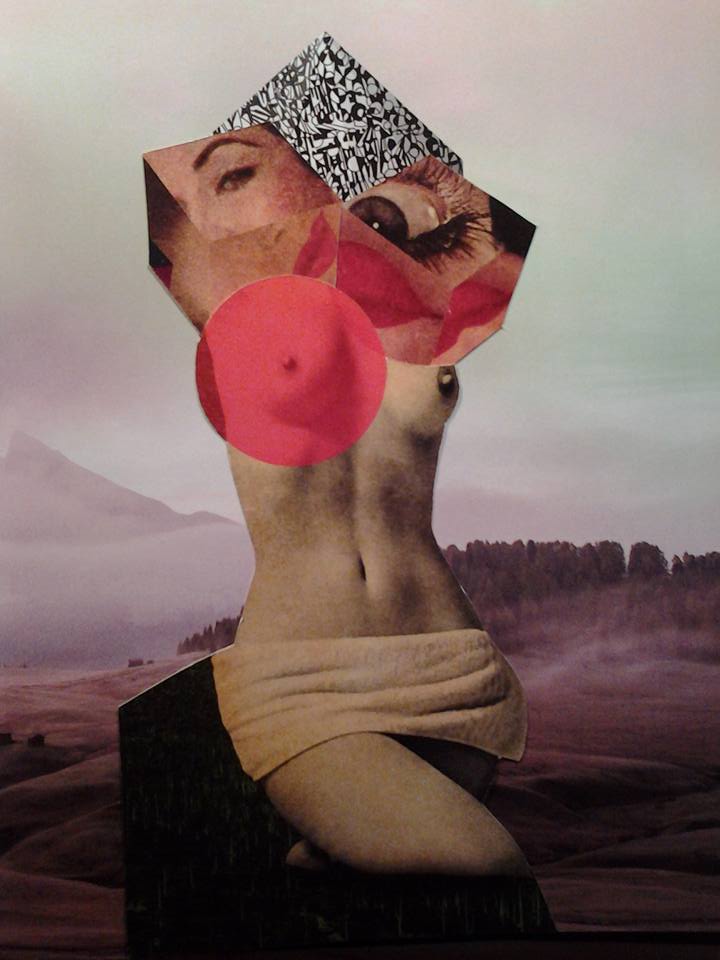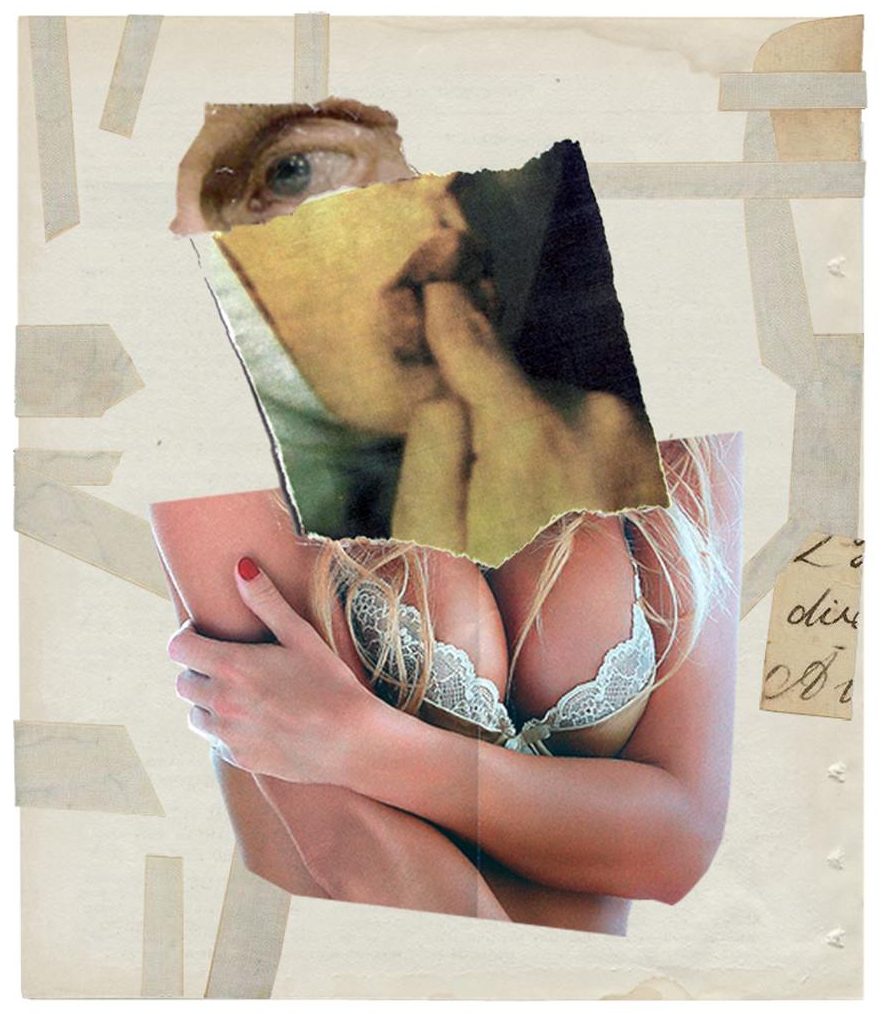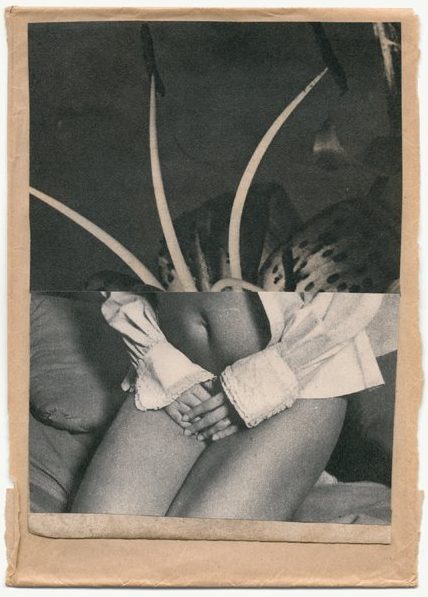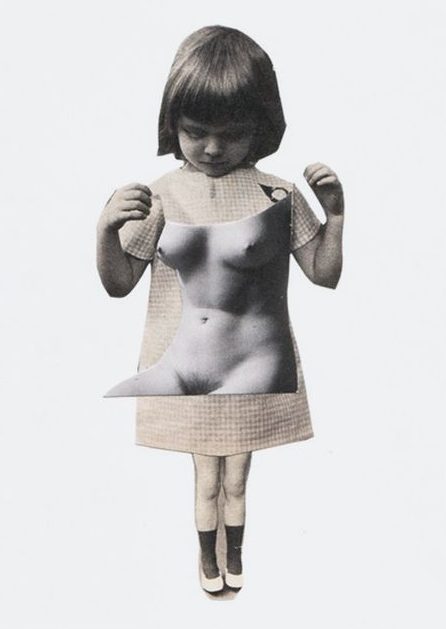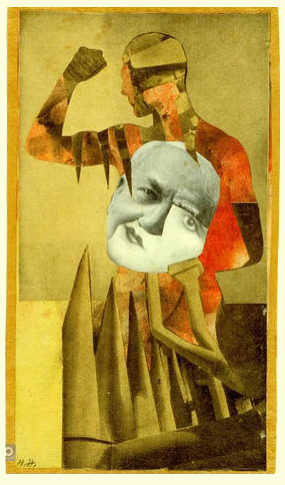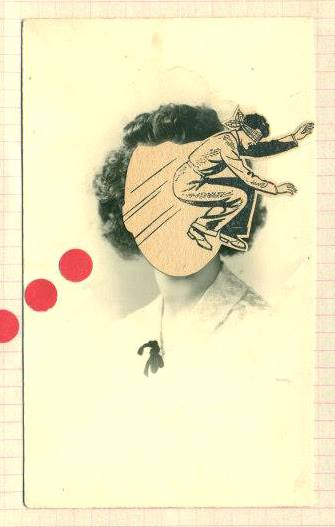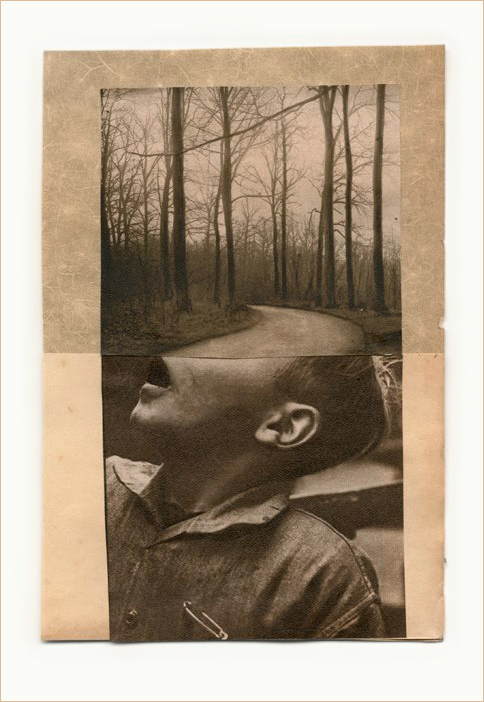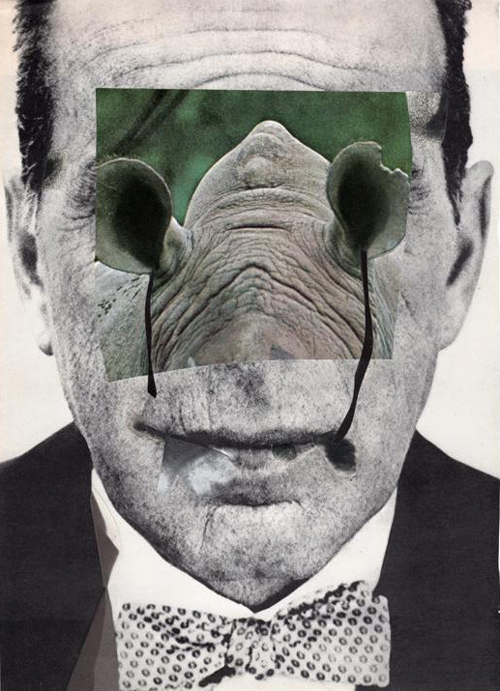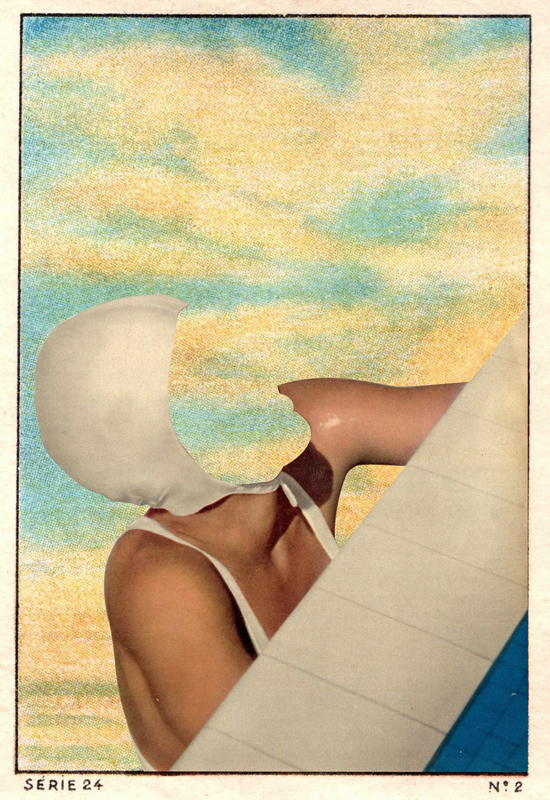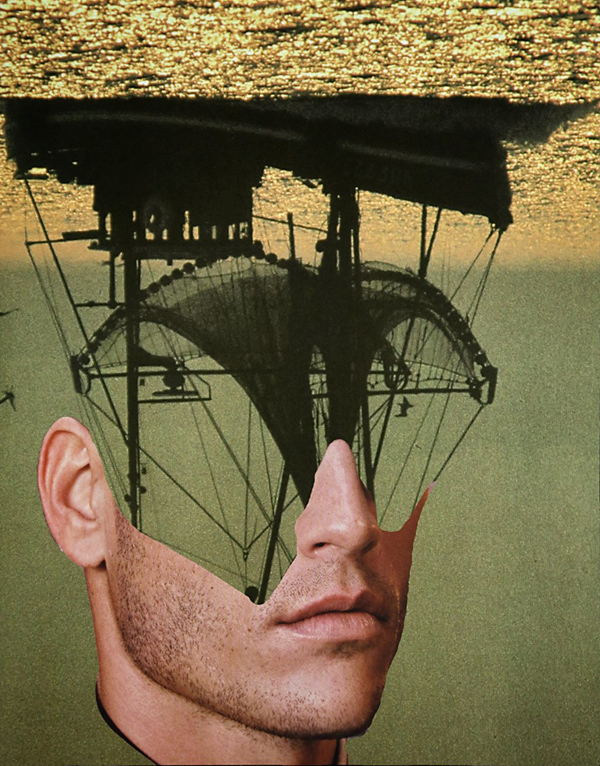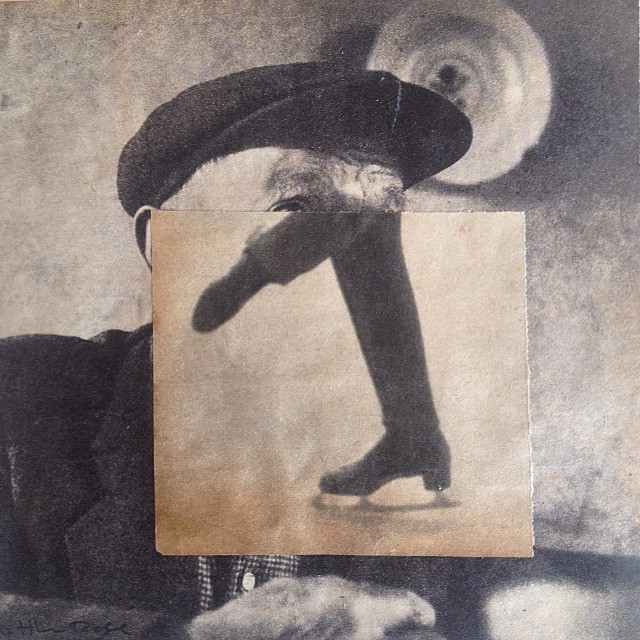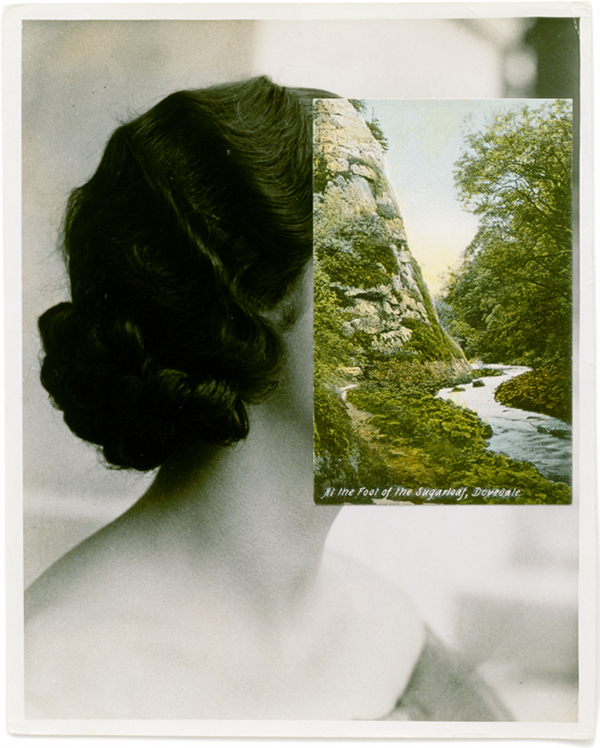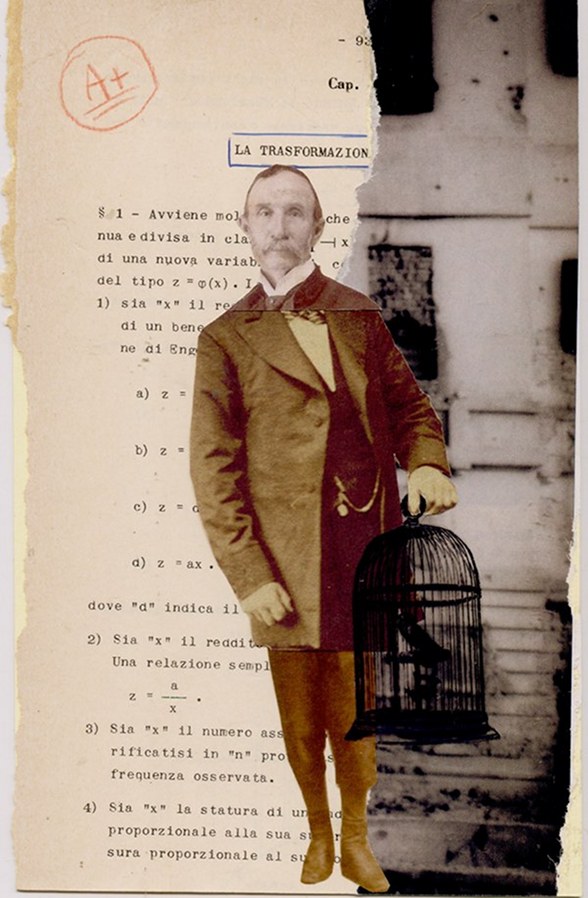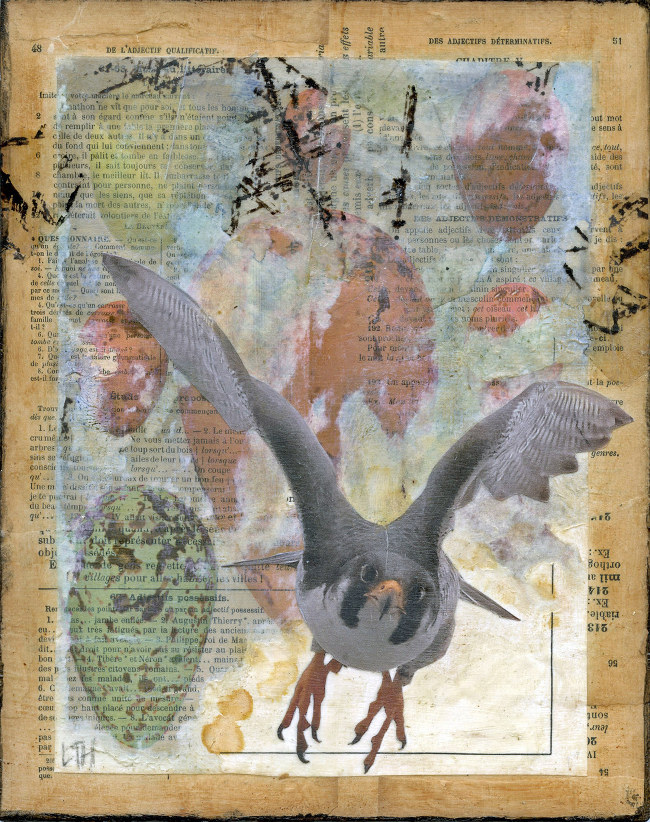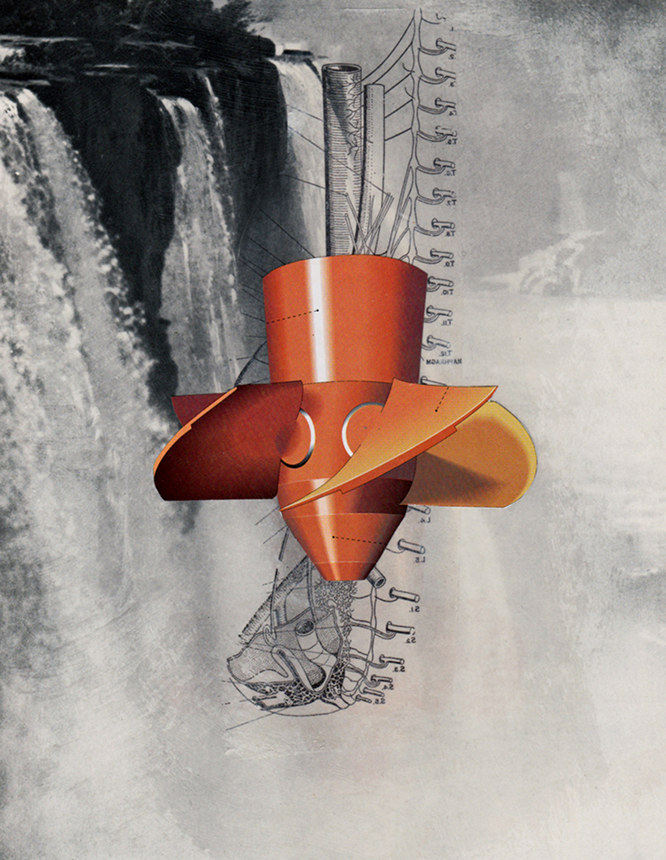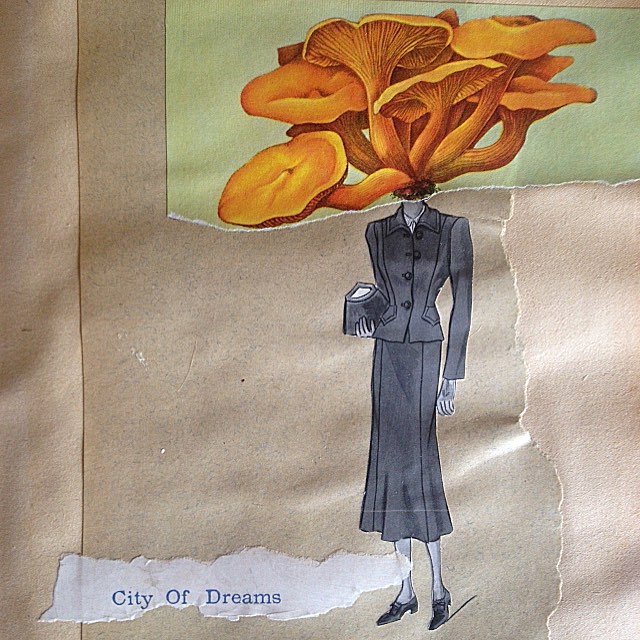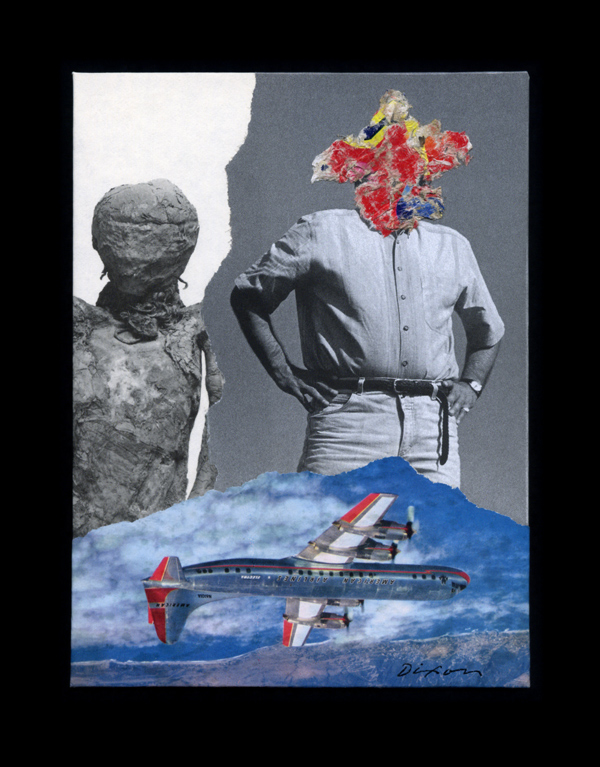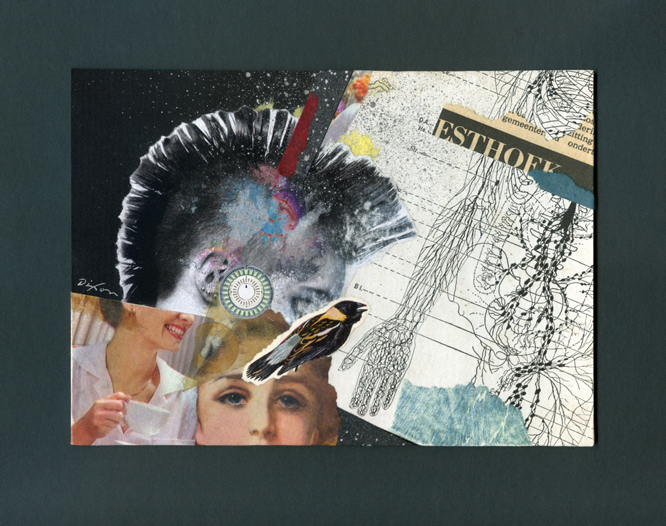Earlier this month I had the privilege of attending a gallery talk by Kentucky artist Robert Hugh Hunt, as he outlined his ambitious “Twentieth-Century Icons” collage portrait project and described an attitude toward the medium that is profoundly thought provoking.
You may be aware of Robert from his long-running Hillbilly Voodoo collaboration with T R Flowers or the way he brings an individualistic mixed-media aspect to contemporary collage. Hunt and I have done our own collaborative works together and we share the experience of creating collage artwork in a geographic environment that often responds to the medium with a sense of bewilderment. Clearly, this circumstance is no impediment to the strong personal approach that runs through Robert’s body of work. He describes himself as a twentieth-century man, but his art is always fresh and intuitive. It springs from a deep cultural awareness that is inseparable from his creative identity.
Hunt told me that he thinks there is lot of negativity towards collage. “I hear people say that collage artists are only using something someone else has created,” he said. “The word appropriation is bandied about. This is true to a certain extent. Collage is a medium steeped in appropriation, and as such is delegated to the status of the red-headed stepchild of art. But to me collage or any medium has to transcend the material used to make it, to truly be art. It is the collage artist’s job to use the appropriated imagery, and, by changing and manipulating it, to relay his own message and to find his own voice.”
Katrien De Blauwer recently brought our attention to the same topic with a link to this page at WIDEWALLS, where Elena Martinique suggests that the term adoption is “more appropriate to describe the level of care one should take when using someone else’s creativity” as a point of takeoff. Many of us who pay attention have seen collage after collage that exploits a prominently featured “load-bearing” image, with trite or superficial treatments that rely almost solely on the power or interest of a photographer’s or illustrator’s invested creativity. Most of us probably started out this way, and it can be initially absolved in student work. Professional or serious amateur collage artists must hold themselves to a much higher standard.
Perhaps that is why I lean toward “maximalism” in my own work. I don’t know what I would say to other creative people if they called me on merely tweaking their intellectual property with a note of irony, humor, or cosmic wonder. 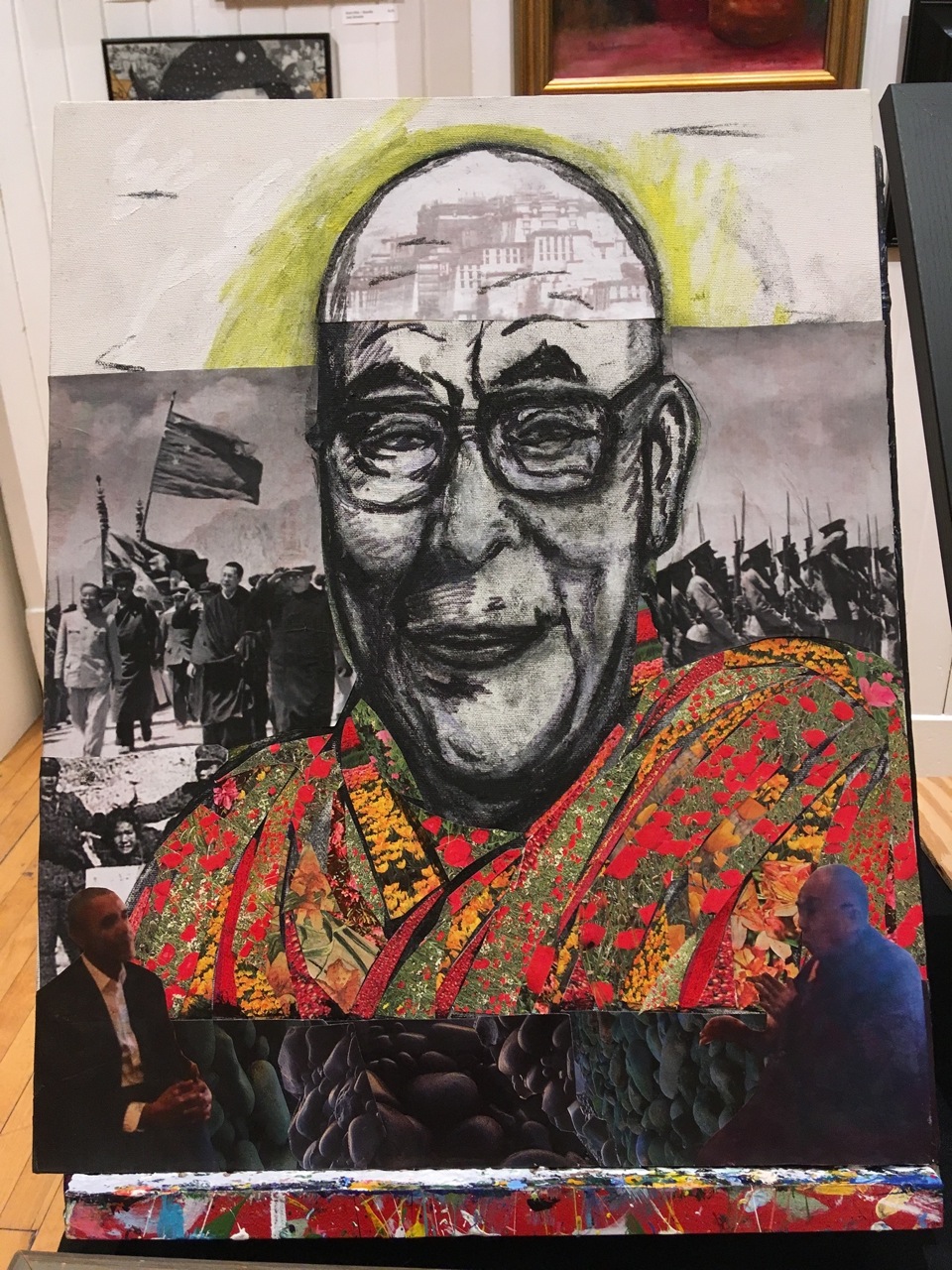 I have great respect for collage minimalists who bring a consistent level of innovation to work that actually transcends the component parts.
I have great respect for collage minimalists who bring a consistent level of innovation to work that actually transcends the component parts.
Robert Hugh Hunt moves from minimalism to maximalism with a particular voice that defies imitation. In the tradition of fine art collage, the unique instrumental sound of “Robbo” is heard above whatever compilation of raw ingredients he puts to use. But, for me, there is another dimension that is also present — an authenticity rooted in drawing that cannot be imposed with a contrived “outsider” style. I look forward with high anticipation to how he brings all of this capability to his emerging series of famous faces.
Einstein – Teddy – Ali – Anne Frank
mixed media collage portraits by R H Hunt
16 x 20 inches each, 2014-2017
(below) R H Hunt at the Community Arts Center with his
in-process portrait of the 14th Dalai Lama
Mama’s Story
monochromatic collage by R H Hunt
collaborative collage
from ‘Hillbilly Voodoo’ series
R H Hunt and T R Flowers
mixed media collage by R H Hunt
(click each to view larger)

